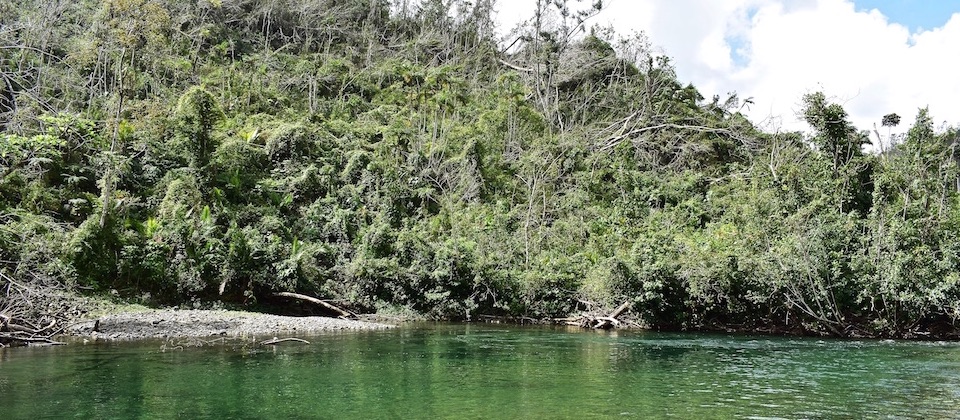
Published on 19 May, 2018.
River Las Minas is rather modest in length but just as pristine as any other one in Baracoa! It is seldom mentioned, compared to other famous ones such as rivers Duaba, Toa or Yumurí. It runs along a beautiful valley between mountains and it is surrounded by a set of Cuban endemic flora species called “charrascal”.
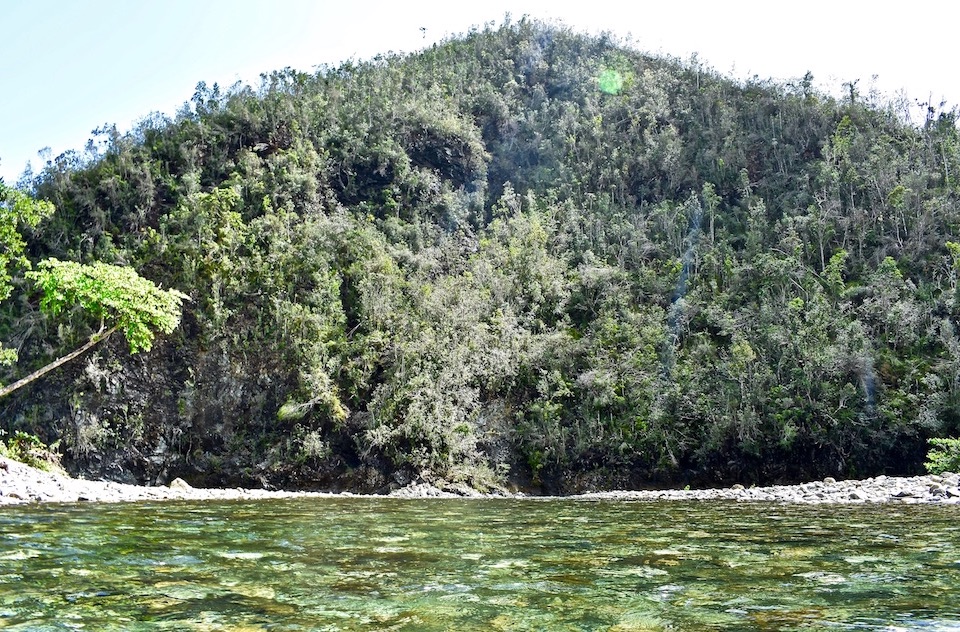
The charrascal is a peculiar geological and botanical environment in Cuba’s East (the “Oriente cubano”). At first sight, and from a distance, the charrascal would seem to be nothing more than an unappealing, nondescript scrub. However, when you venture into it, the charrascal reveals a unique and beautiful flora.
River Las Minas – Baracoans’ recreational grounds and cradle of champions
River Las Minas is only 5.6 km long. It is a tributary to river Miel, which meets the sea further down at Miel Bay, in the idyllic community of Boca de Miel, right by the city of Baracoa.
In the summer, Baracoans love spending the day at river Las Minas’ large natural pool by the tiny community of Vega Larga.
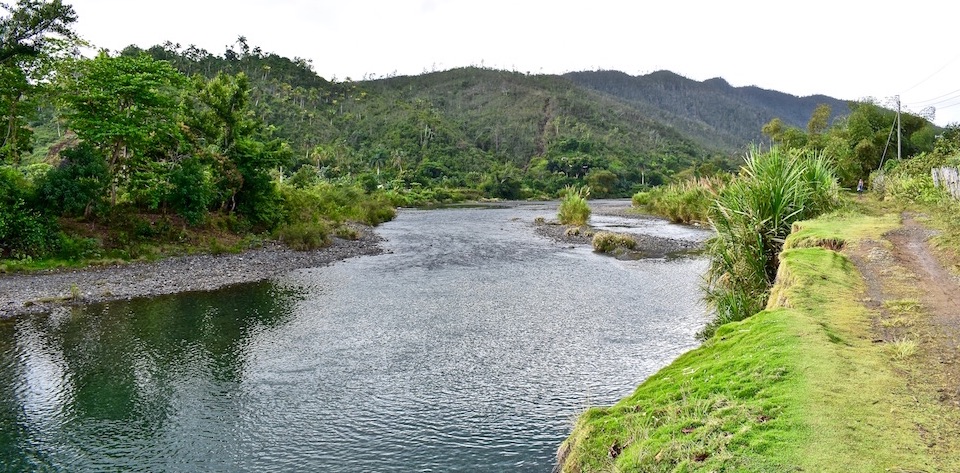
That natural pool was the training area for young swimmer Lisbet Gámez Matos, a medal winner at international swimming competitions.
Pristine waters meander down a beautiful valley between mountains
River Las Minas meanders down from the mountains – sometimes narrow, sometimes wide. Always crystal-clear. As you hike up its course, you will have to cross it many times.
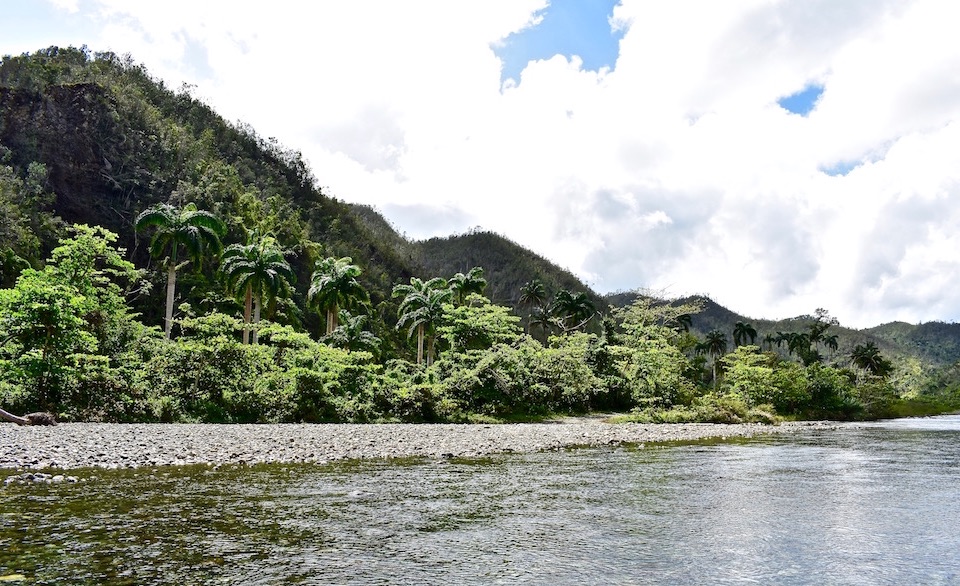
Local folks indicate where places of interest are located according to the number of river crossings you have to complete to arrive there. Thus, for instance, the Las Minas community is 25 crossings up the river – and from the 7th crossing you can contemplate the Loma del Peñón (El Peñón mount).
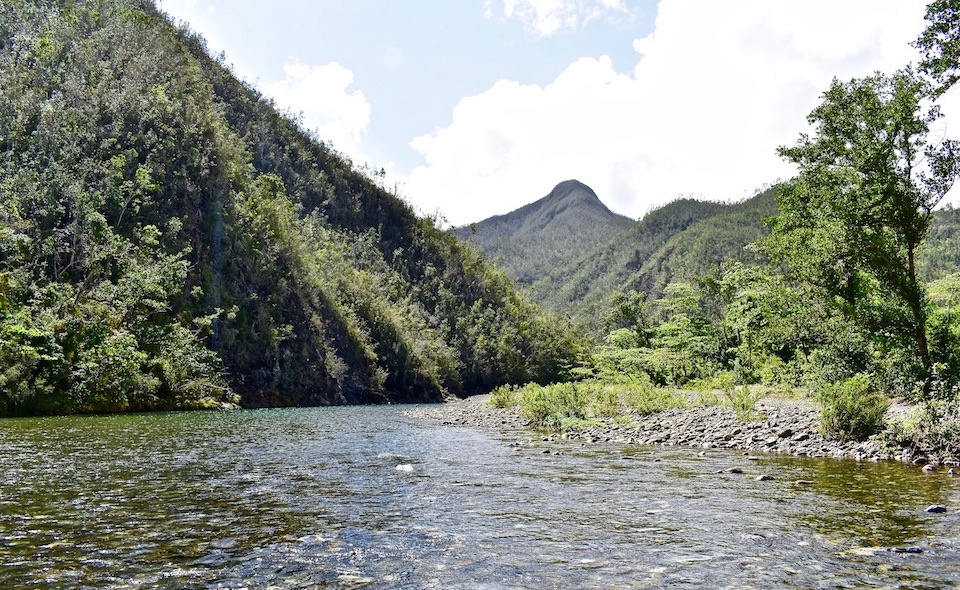
The charrascal – seemingly modest yet unsuspectedly rich
A significant number of travelers come to Baracoa attracted by its lush palm trees and tropical rain forest vegetation. The charrascal is barely the type of flora that catches their eye. Still – the charrascal proves to be fascinating.
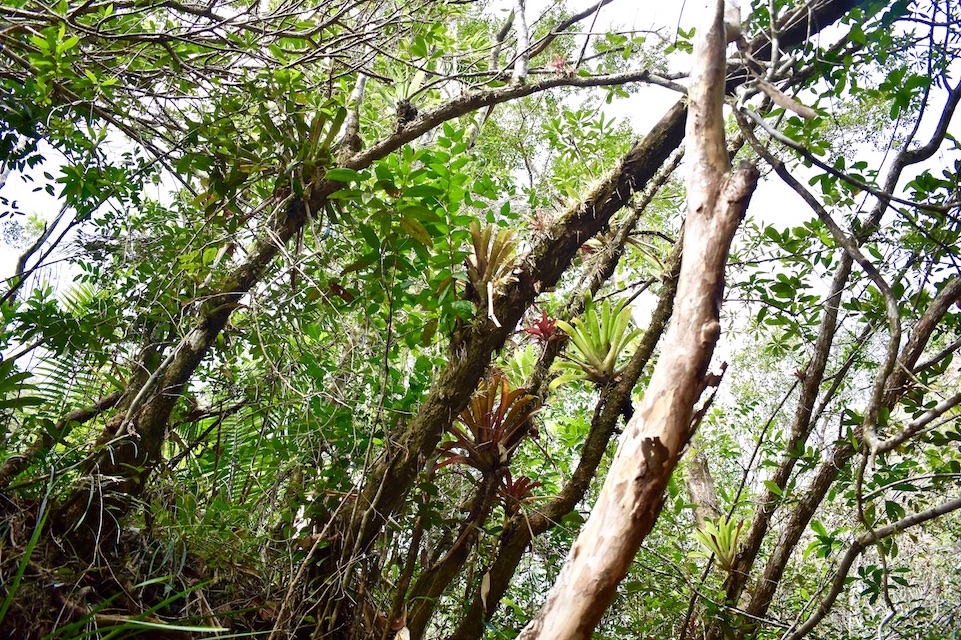
The charrascal flora is unique, as it has evolved in a particularly challenging geological context. It grows on serpentine rocks and, if there is any soil at all, it is of the ferralitic kind. A context very poor in nitrogen.
The charrascal – trees, bromeliads, orchids…
The charrascal habitat is found in the Nipe-Sagua-Baracoa massif. It comprises plants of the xeromorphic kind (their structure is adapted to dryness), with very few thorny species. By contrast, the cuabal habitat shows an important proportion of thorny plants and trees.
That said, you will still find some thorny species in Baracoa’s charrascal, such the pajúa palm tree (Bactris cubensis) and the endangered Acacia bucheri tree, whose trunk is wholly covered in thorns.
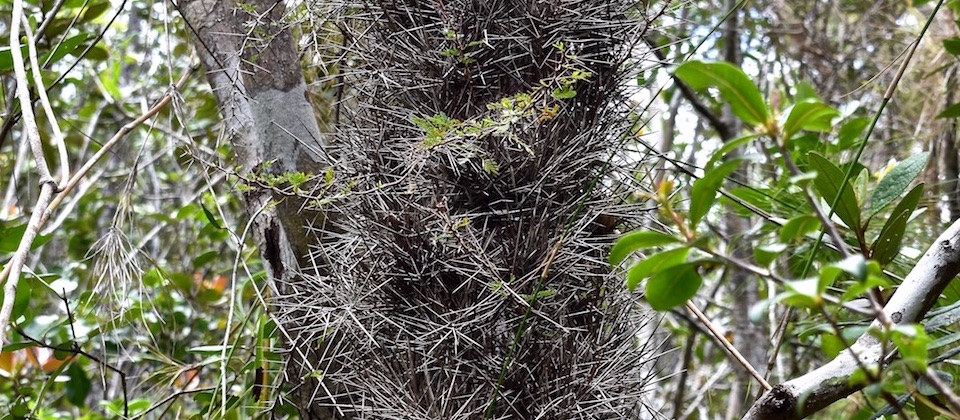
You just need to explore one of the ravines where a water stream flows into river Las Minas to find a great variety of flowers. Here we share some of them with you, starting with the fiery Gesneria shaferi, currently classified as a threatened species and seen here surrounded by the endemic fern Anemia coriaceae.
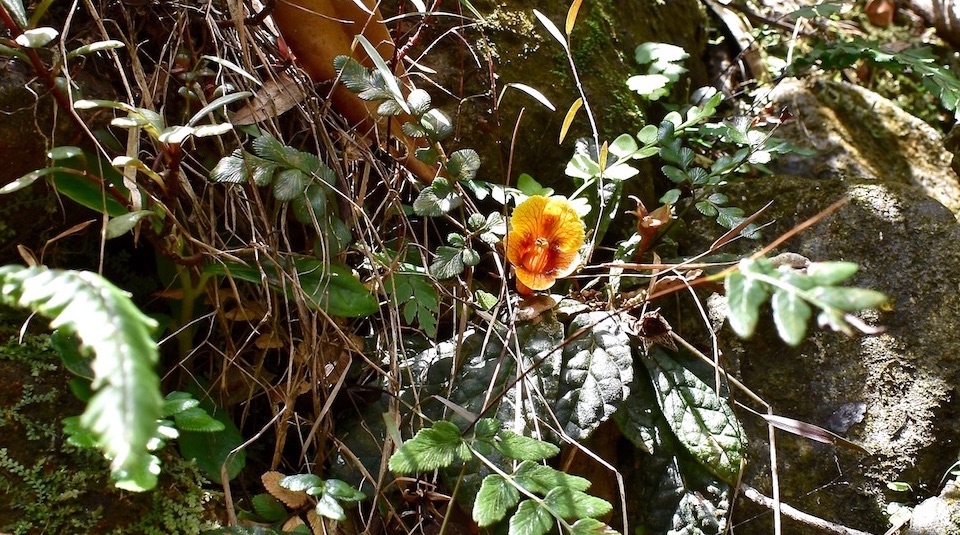
This little, six petals flower is a Rauvolfia salicifolia. You can appreciate a magenta colour at the petals’ base, near the flower’s centre. In the background you can see the serpentine rocks on which this exceptional vegetation thrives.
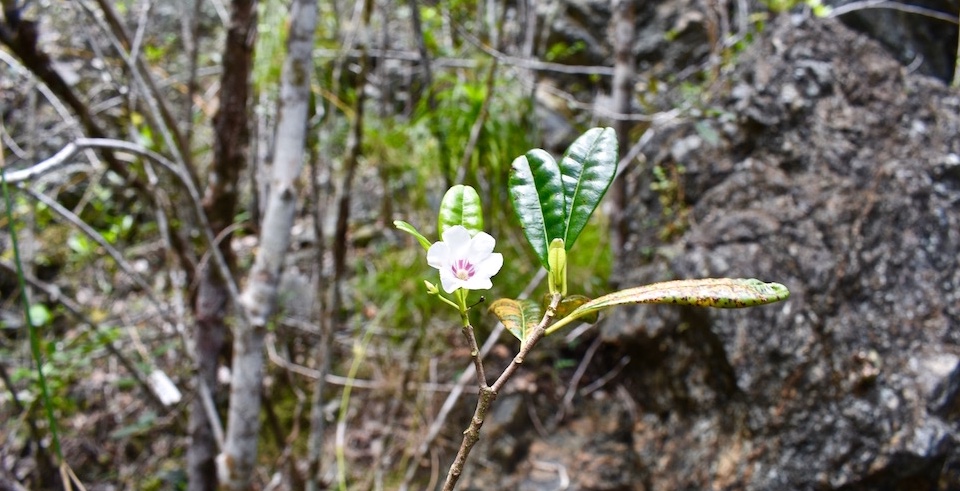
More flowers – but birds as well!
Birding or bird watching lovers will find the charrascal to be an interesting environment. During our excursion we were able to photograph a Cartacuba (Cuban tody, Todus multicolor) a lovely, colourful endemic tiny bird, as well a Tocororo (Cuban Trogon, Priotelus temnurus), our national bird.
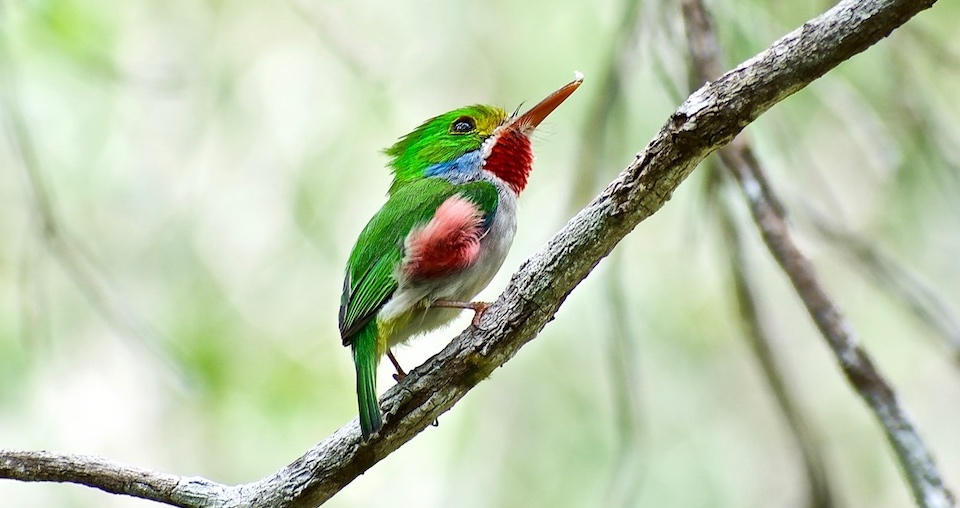
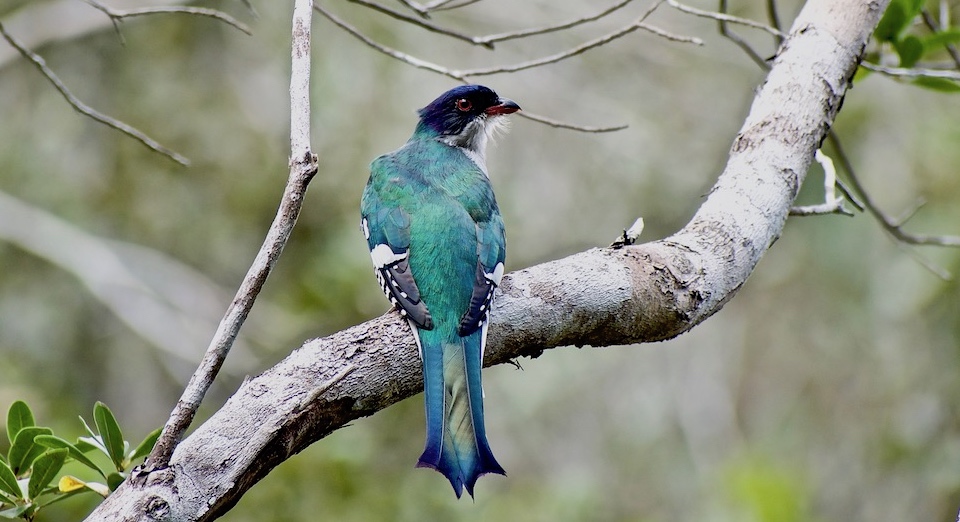
There is a range of orchids to be found in the charrascal. We spotted another endemic species that has been classified as threatened – the Atopoglossum prostratum.
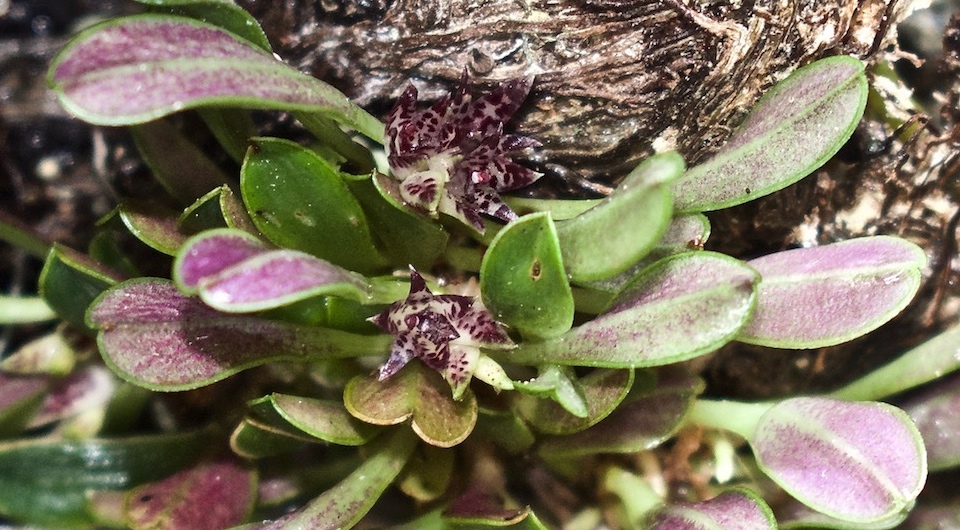
Among the various bromeliads we found, there was this beautiful Tillandsia bulbosa.
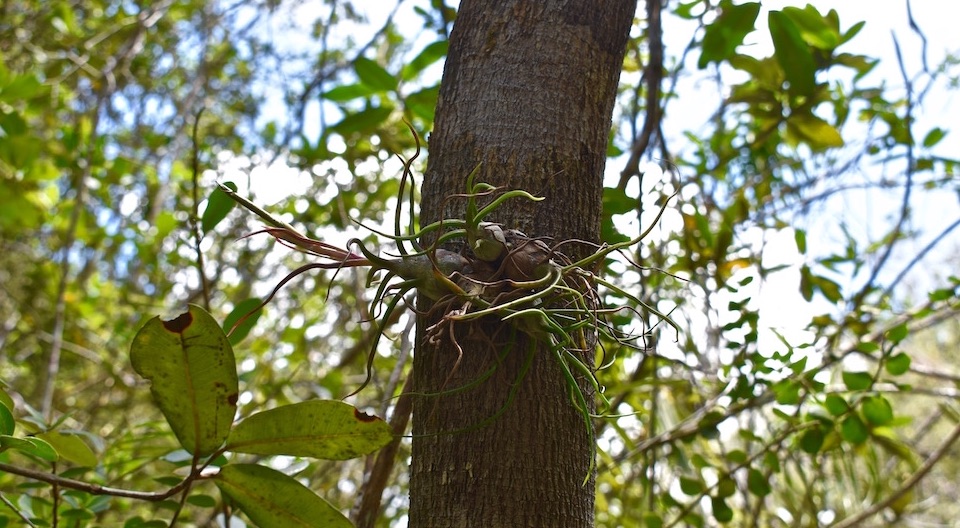
More endemic flowers and plants in these fabulous ravines
The Gesneria duchartreoides, another Eastern Cuba endemic species, seemed to us to be quite abundant in the area. Its capriciously shaped flowers invite you to attentively contemplate it.
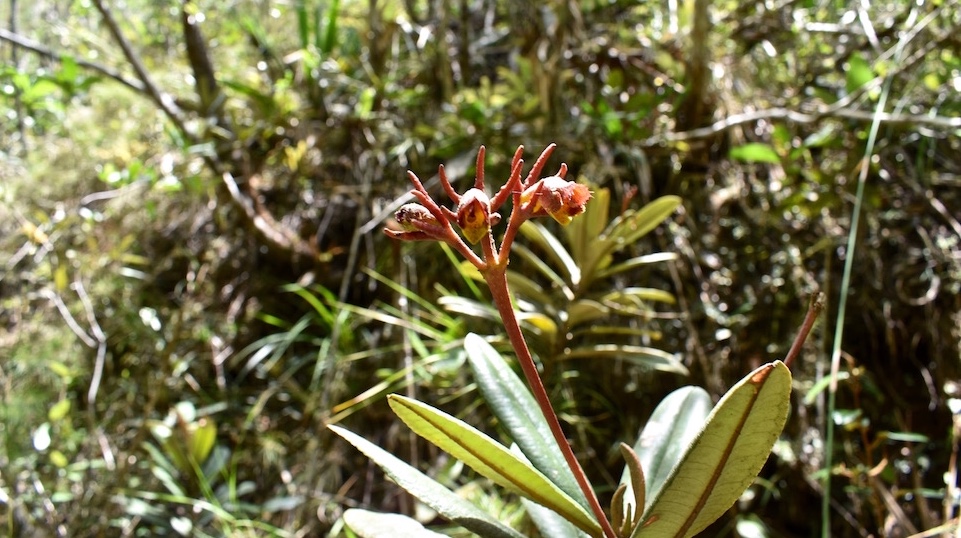
We also came across numerous beautiful blossoms of this Purdiaea, also endemic of the “Oriente de Cuba”. The flowers rise up to the sky and shine under the sunlight, with their petals in delicate shades of pink and lavender.
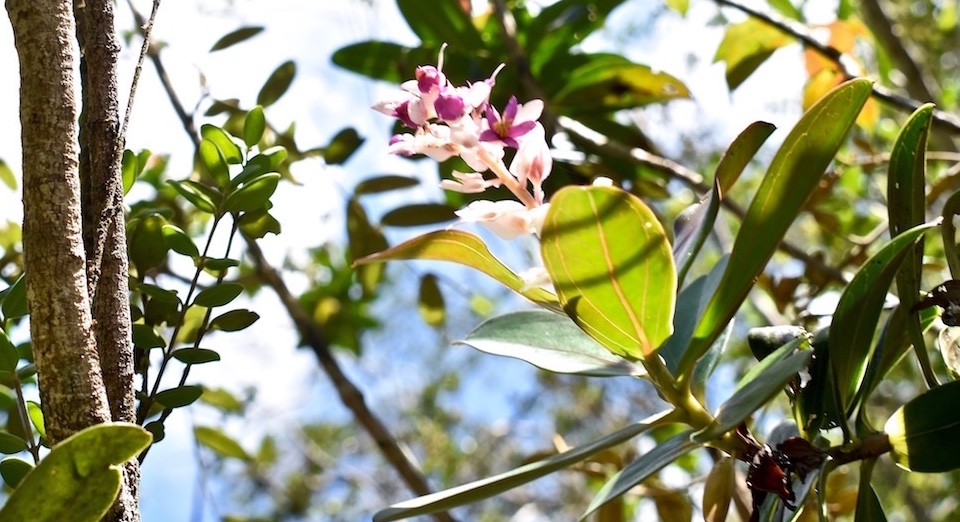
Just as is the case in other protected areas such as Alexander Humboldt National Park, the river Las Minas’ charrascales allow you to observe the Dracaena cubensis, yet another endemic species from our region. Those we found during our hike had longer and taller stalks than the ones we’ve seen in other places.
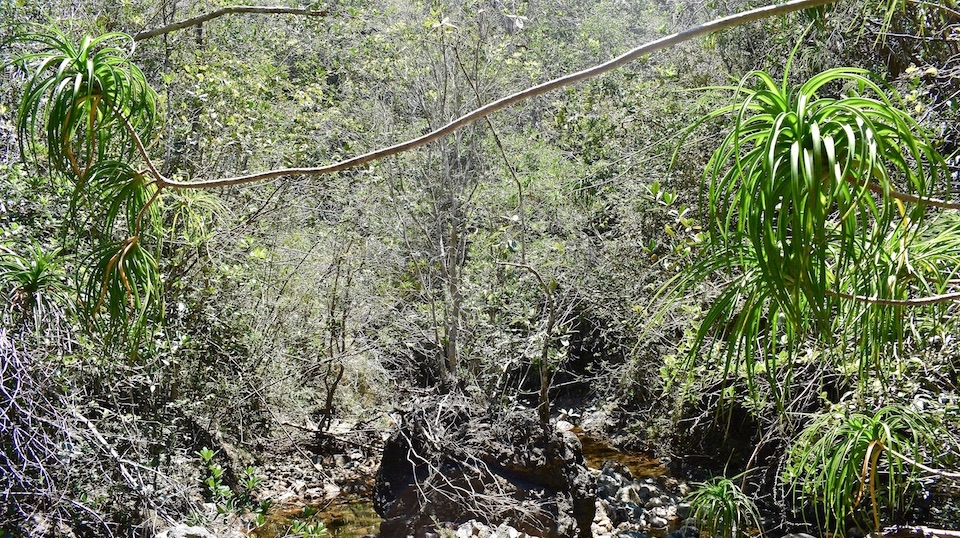
At the end of our exploration, we took a break by the water stream. It was a lovely spot covered in leafy vegetation allowing the sun rays to pass through.
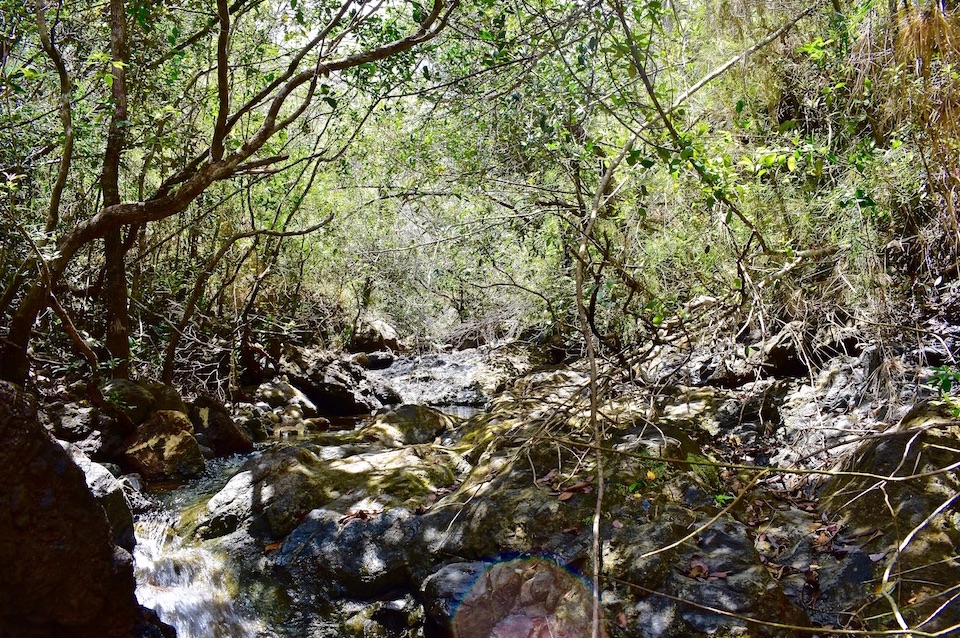
It is simply amazing that on this normally unyielding rocky soil such botanical riches would develop over time.
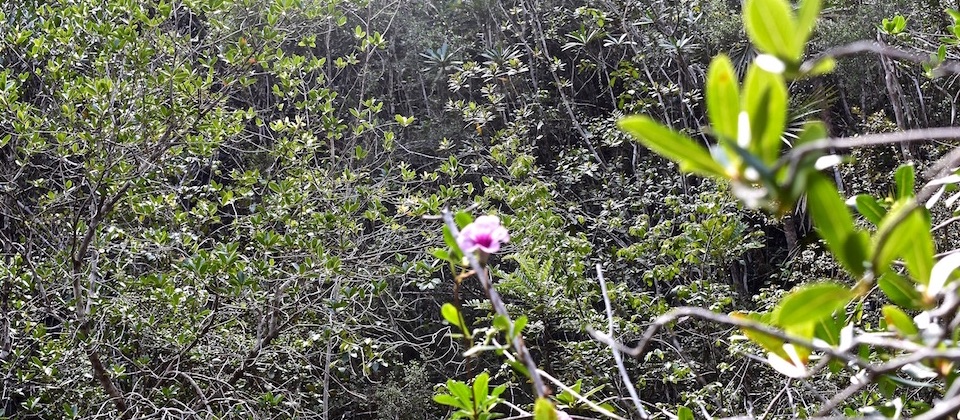
As we hiked back to Baracoa, we enjoyed this beautiful view across river Las Minas – the two mounts that local folks humorously call “Teresa’s breasts”.
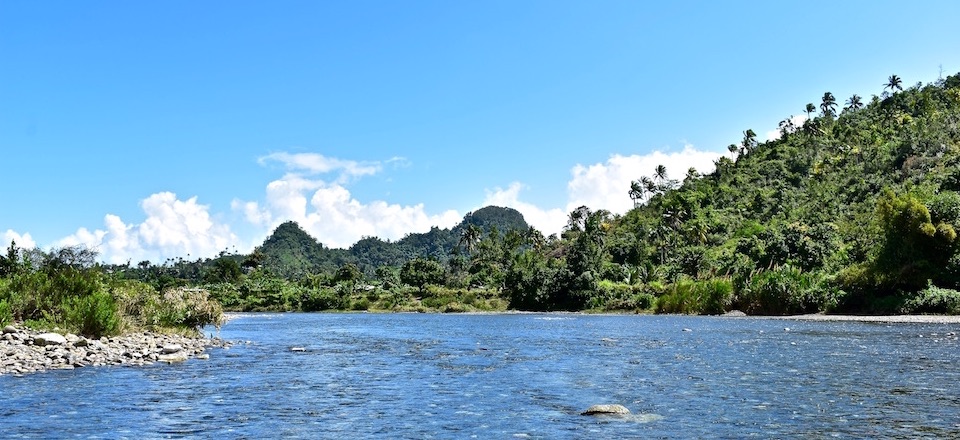
Did you know?
Roughly 70 % of plant species in the charrascal are endemic. You won’t find them in other regions of Cuba.
The Lista Roja de la flora de Cuba (Cuban Flora Red List) documents the state of conservation of the country’s flora, including the specific situation of a large number of plants and indicating for instance whether they are vulnerable, threatened or endangered.
The Lista Roja was published in Bissea magazine, edited by Cuba’s National Botanic Garden (Vol. 10, special number 1, January, 2016) and it is the result of work carried by the Cuban Plants Specialist Group of the International Union for Nature Conservancy (IUNC)’s Species Survival Commission (SSC).
Practical info and budget details
- The hike along river Las Minas starts from the small community of Cabacú, right by the town of Baracoa. To get there, you can take a taxi (between 3 and 5 CUC), or a bicitaxi (between 3 and 4 CUC), or a horse-pulled cart (10 CUP).
- You can also get there cycling – yet we consider the trajectory to be very short and not worth renting a bicycle you will barely use over the day. Plus – it will be difficult to find a good place to leave the bikes while you do the hike along the river. There are other excursions in the Baracoa region which are more suitable for cyclotourism.
- We recommend that you take with you enough drinking water to make sure you won’t dehydrate. And a something to eat – a sandwich and some fruit or local typical sweets.
- You will need appropriate shoes for the hike and to cross the river a few times. The water depth may vary between 2 inches and up to your thighs.
- In order to actually appreciate the local flora, it is crucial to be accompanied by a guide who is knowledgeable about the charrascal.
Activities, Baracoa, Sustainable Tourism
Tags: Birdwatching, Ecology, Forests, Hiking, Nature Tourism, Off the beaten path, Rivers

Leave a Reply